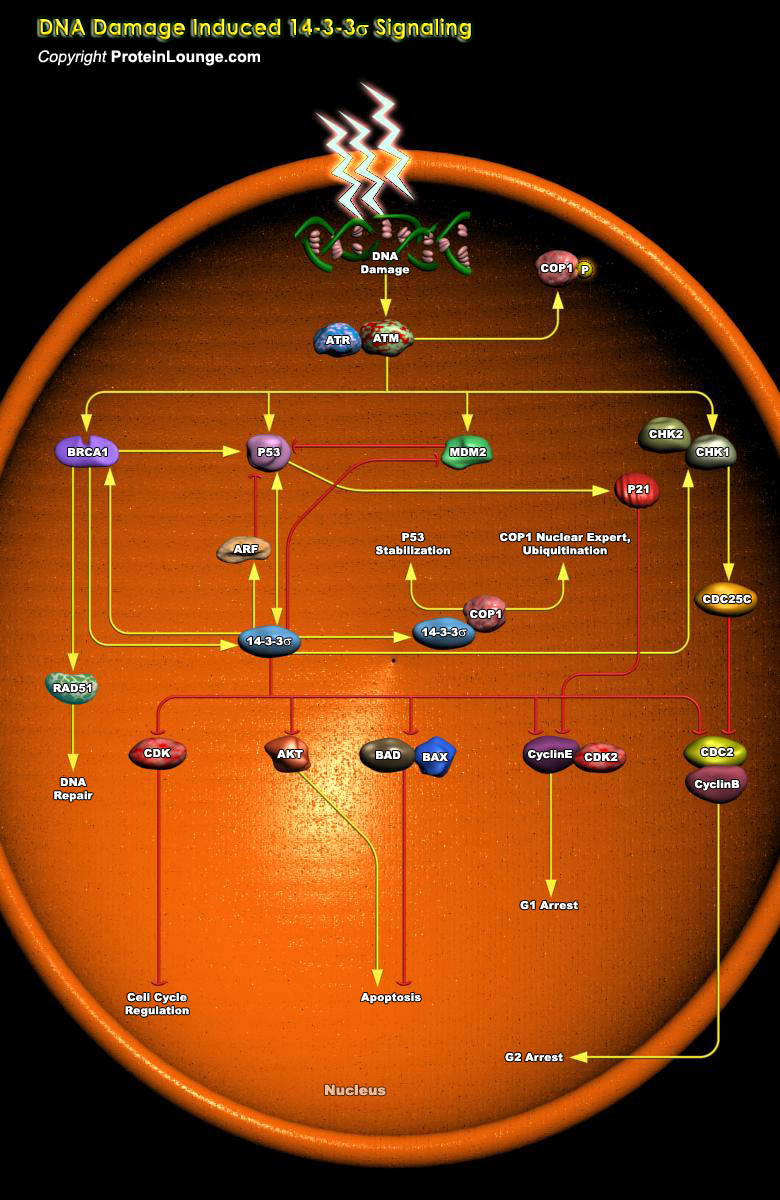
DNA damage checkpoints are critical for preventing tumorigenesis and regulating the response of cells to genotoxic agents. When cells are exposed to DNA damaging agents, they respond by undergoing cell cycle arrest or programmed cell death. 14-3-3 proteins play particularly important roles in coordinating progression of cells through the cell cycle, regulating their response to DNA damage, and influencing life-death decisions following internal injury or external cytokine-mediated cues (Ref.1 and 2). 14-3-3 sigma (also called stratifin or SFN), a tumor suppressor, is a member of a highly conserved family of 14-3-3 proteins that are present in all eukaryotic organisms. Its increased expression causes resistance to anticancer agents and radiation that causes DNA damages[..]
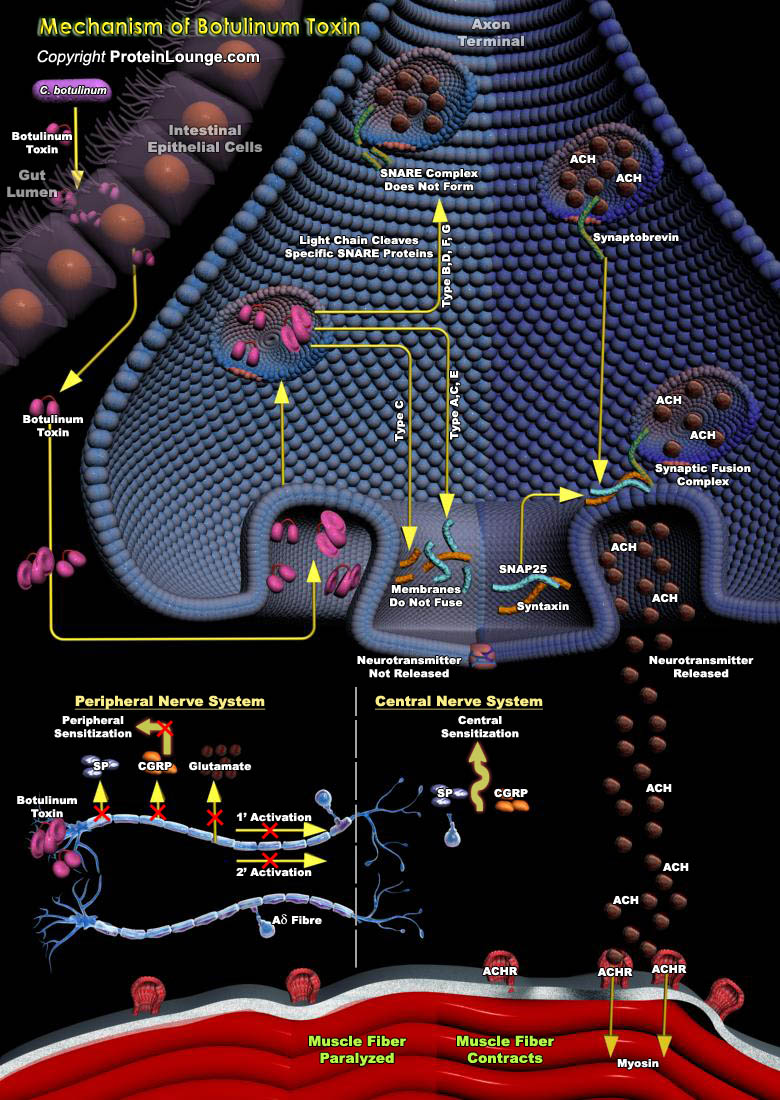
BoNT(Botulinum toxin) is a potent neurotoxin that is produced by the gram-positive, spore-forming, anaerobic bacterium, Clostridum botulinum. There are 7 known immunologically distinct serotypes of BoNT: types A, B, C1, D, E, F, and G. Clostridum neurotoxins are produced as a single inactive polypeptide chain of 150 kDa, which is cleaved by tissue proteinases into an active di-chain molecule: a heavy chain (H) of ~100 kDa and a light chain (L) of ~50 kDa held together by a single disulfide bond. Each serotype demonstrates its own varied mechanisms of action and duration of effect. The heavy chain of each BoNT serotype binds to its specific neuronal ecto-acceptor, whereby, membrane translocation and endocytosis by intracellular synaptic vesicles occurs. The light[..]
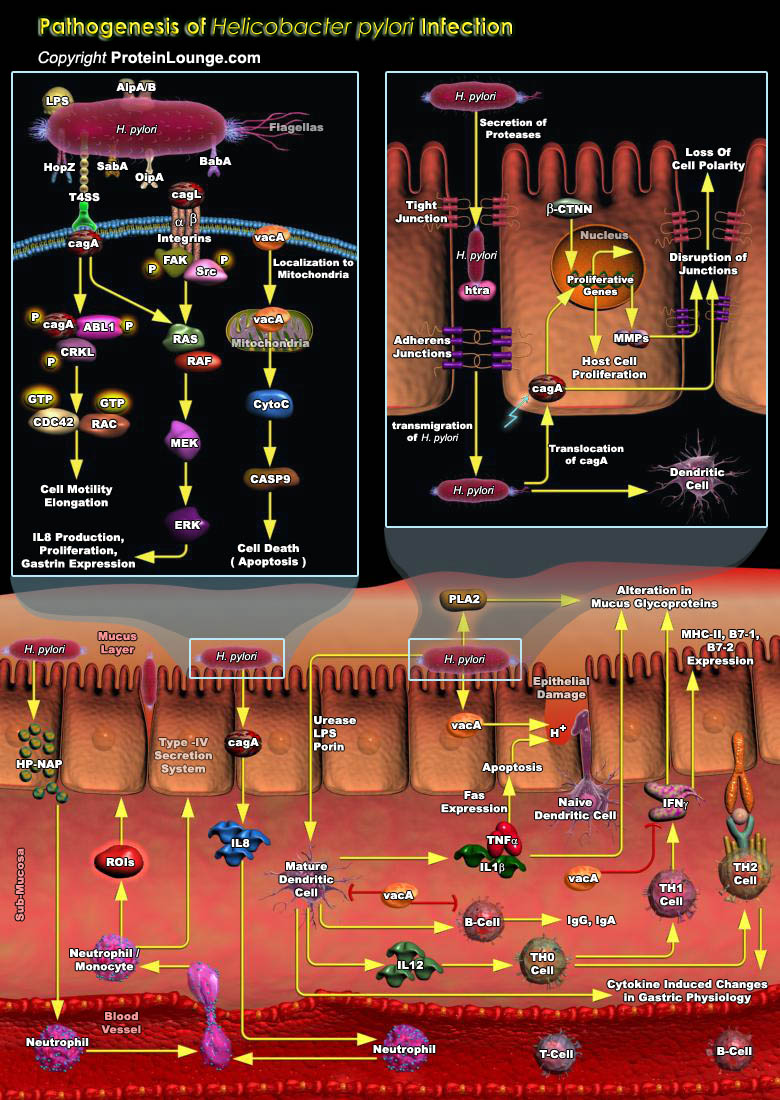
The gastrointestinal tract represents an important barrier between human hosts and microbial populations. One potential consequence of host-microbial interactions is the development of mucosal inflammation. A paradigm for such chronic host-microbial relationships is carriage of Helicobacter pylori, Gram-negative bacteria that colonize the stomachs of humans and primates. H. pylori colonization induces chronic gastritis in essentially all hosts, a process that increases the risk of developing peptic ulceration, distal gastric adenocarcinoma, and gastric mucosal lympho-proliferative disease. However, only a small percentage of persons carrying H. pylori develop clinical sequelae; enhanced risk may be related to differences in expression of specific bacterial products, to[..]
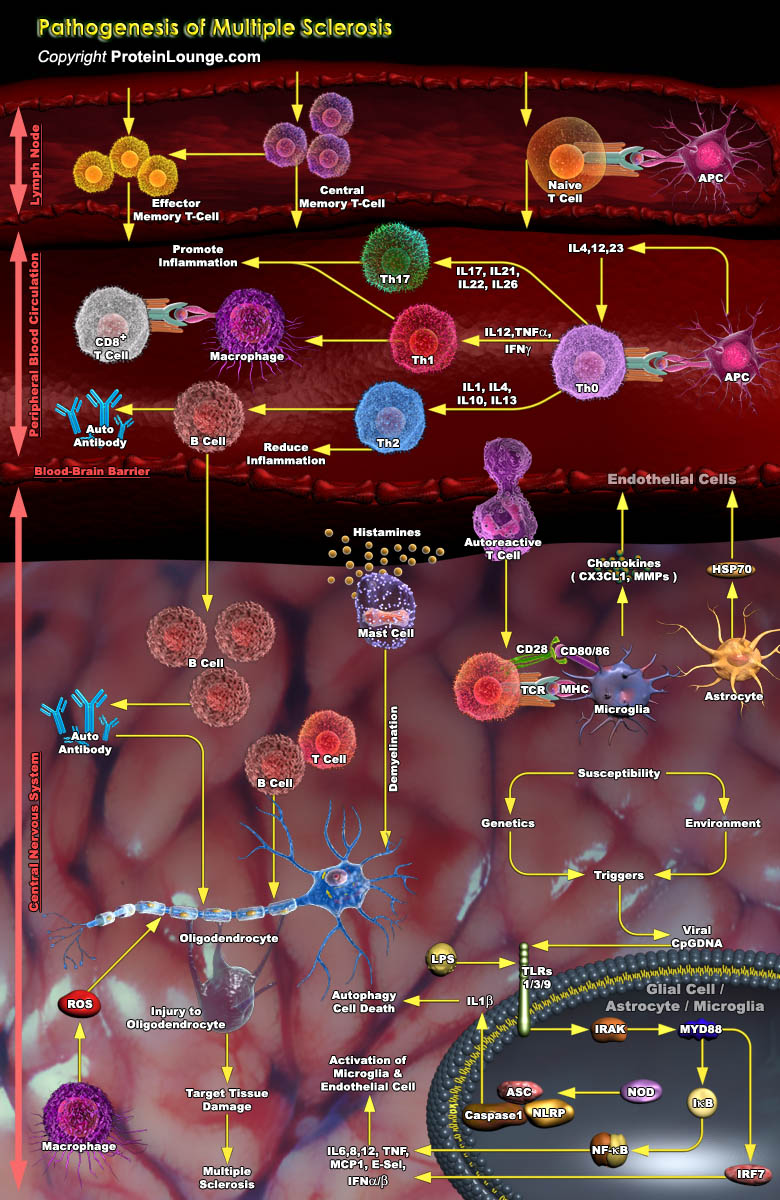
Multiple sclerosis (MS) is an inflammatory, demyelinating, and neurodegenerative disease of the central nervous system that affects both adults and children. MS is characterized by the formation of multiple lesions along the nerve fibers in the brain, spinal cord and optic nerves. Inflammation of the white and gray matter tissues in the CNS due to focal immune cell infiltration and their cytokines are the incipient cause of damage in MS. Hallmark to MS is the demyelinated plaque, which consists of a well-demarcated hypocellular area characterized by the loss of myelin, the formation of astrocytic scars, and the mononuclear cell infiltrates concentrated in perivascular spaces composed of T cells, B lymphocytes, plasma cells, and macrophages. The mechanisms underlying[..]
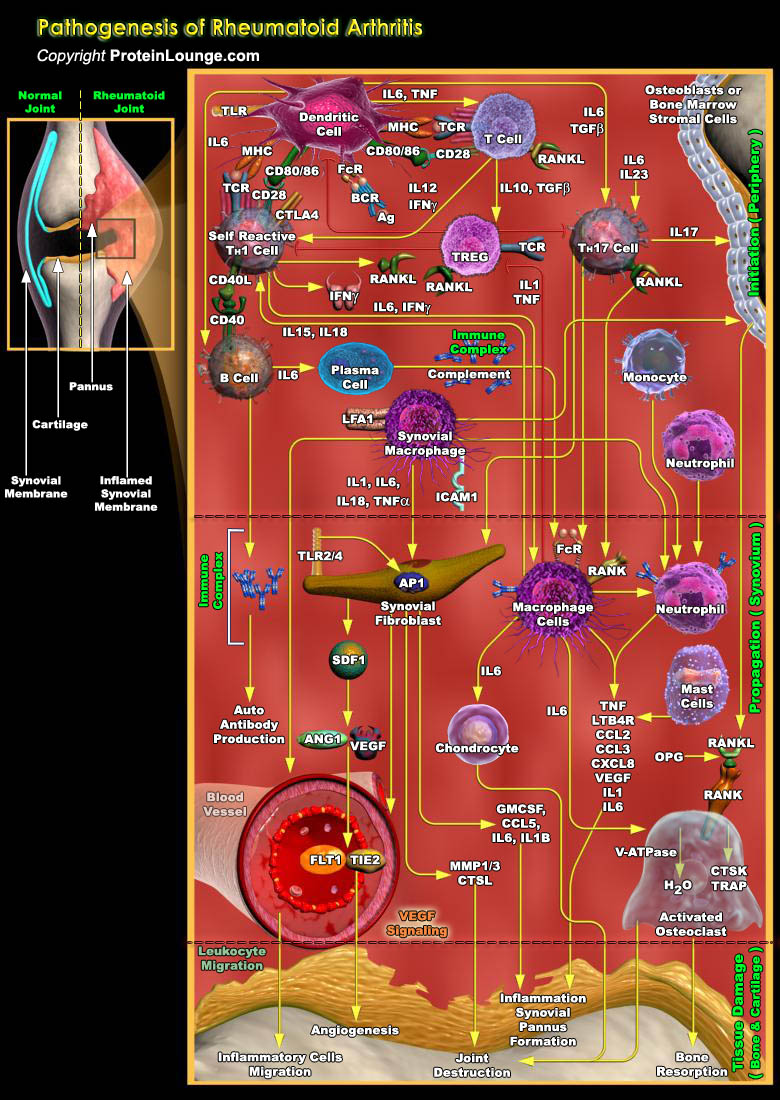
Rheumatoid arthritis (RA) is a chronic symmetric polyarticular joint disease that primarily affects the small joints of the hands and feet. The inflammatory process is characterized by infiltration of inflammatory cells into the joints, leading to proliferation of synoviocytes and destruction of cartilage and bone.This is a chronic debilitating autoimmune disease of unknown etiology affecting diarthrodial joints. Although the disease is characterized by synovitis of the joints, tendon sheaths, and bursae, manifestations that do not involve the synovium are also frequent (Ref.1 & 2). These articular and systemic manifestations are mediated by hyperplasia of the synovial lining cells and extensive infiltration of macrophages, lymphocytes, fibroblasts, and leukocytes[..]
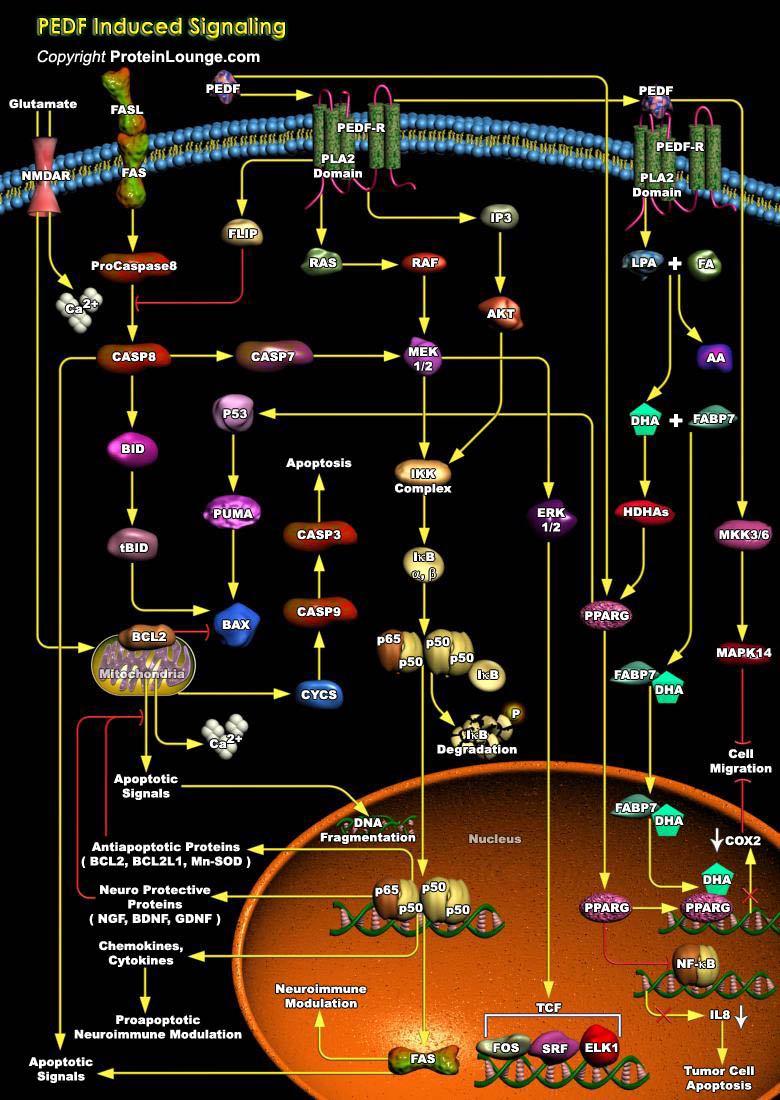
Blood vessel growth and stability are under the exquisite control of a network of pro- and anti-angiogenic factors. Disruption of the balance between these factors is a characteristic of tumor growth and many vascular diseases. Endogenous angiogenesis inhibitors, particularly those that act broadly at the earliest stages, are excellent pharmacological tools in combating pathogenic vessel growth. PEDF (Pigment Epithelium Derived Factor) is a potent and broadly acting neurotrophic factor that promotes survival of neurons in many regions of the CNS (Central Nervous System) from degeneration caused by serum withdrawal or glutamate cytotoxicity and oxidative damage. Glutamate neurotoxicity involves an increase in intracellular calcium resulting from the opening of NMDA[..]
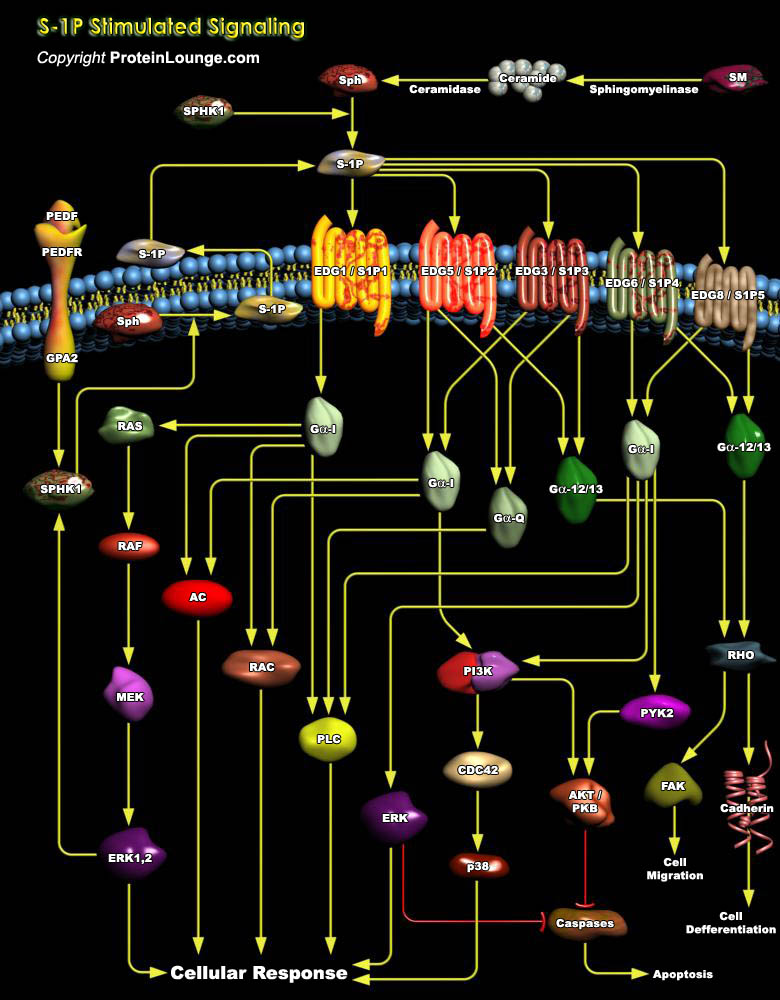
Various lipid molecules serve as second messengers for transducing signals from the cell surface to the cell interior and trigger specific cellular responses. Sphingolipids represent a complex group of lipids that have recently emerged as new transducers in eukaryotic cells. Sphingolipids are found in all mammalian cells and are mostly located in the plasma membrane. They all contain as a backbone a long-chain base – the sphingoid base (mostly sphingosine) – linked to a fatty acid by an amide bond, thus forming ceramide. Addition of a phosphocholine substituent or sugar to ceramide gives rise to the major sphingolipid SM (sphingomyelin) or to glycosphingolipids, respectively. Ceramide is also produced by breakdown of all sphingolipids by glycosidases (for[..]
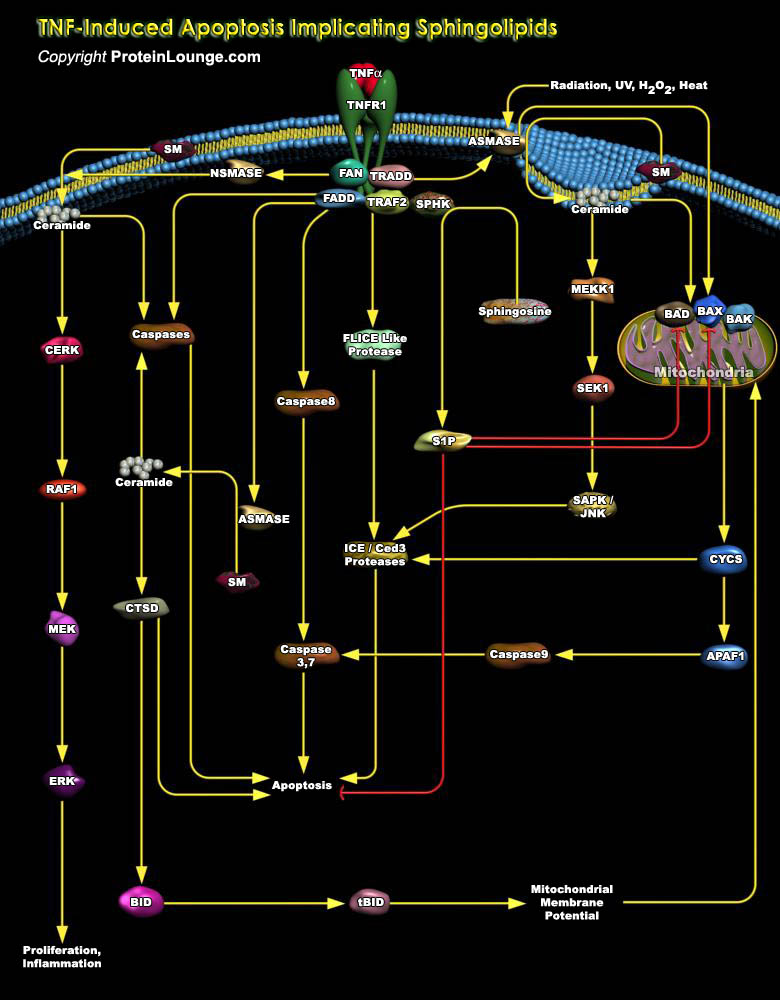
Various lipid molecules serve as second messengers for transducing signals from the cell surface to the cell interior and trigger specific cellular responses. Recently, several sphingolipids have emerged as cellular constituents that are able to promote, mediate or counterbalance apoptosis. Sphingolipids are a family of membrane lipids whose structure is made up of a long-chain sphingoid base backbone (such as sphingosine), an amide-linked fatty acid of varying chain and one of various polar head groups (hydroxyl for ceramide, phosphorylcholine for sphingomyelin, and carbohydrate residues for glycosphingolipids). Addition of a phosphocholine substituent or sugar to ceramide gives rise to the major sphingolipid SM (sphingomyelin) or to glycosphingolipids. Ceramide is[..]
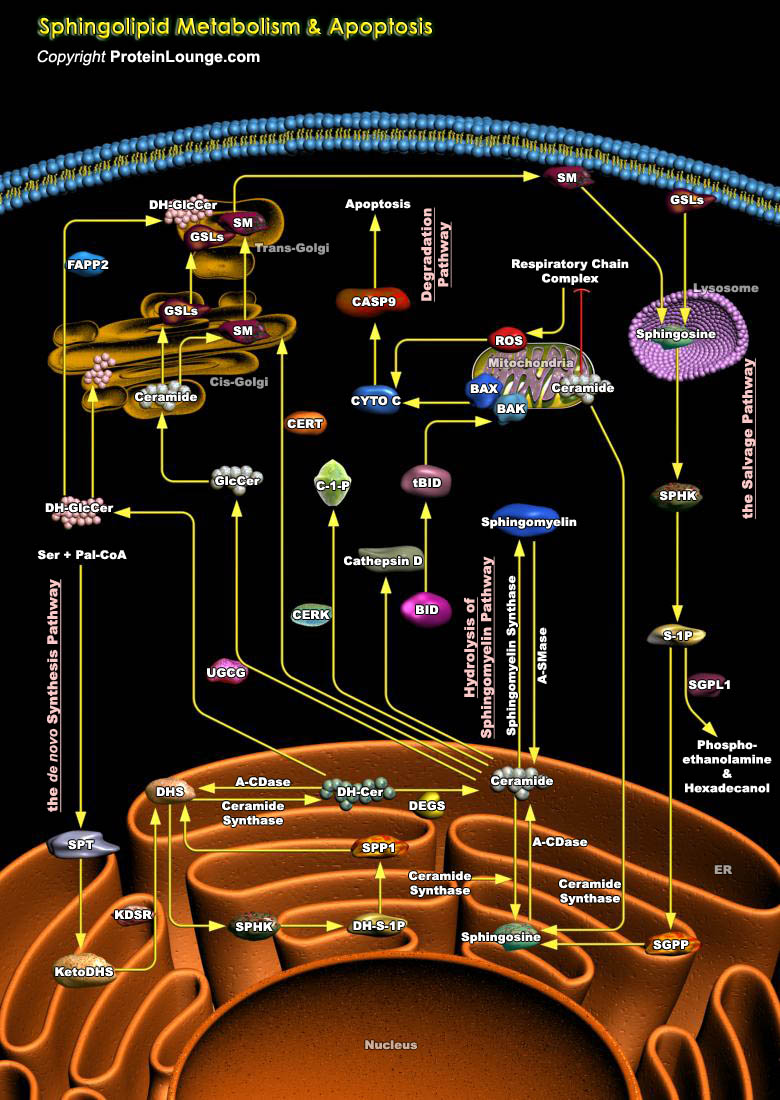
The sphingolipids are primarily situated in the noncytoplasmic leaflet of cellular membranes contribute to the structural integrity and fluidity characteristics of cell membranes and signal transduction complexes. Ceramide sits at the hub of sphingolipid metabolism as the neutral, lipid building block for complex sphingolipids and glycosphingolipids, serving as a substrate for more than 11 different enzymes Ceramide is also a key intermediate for the biosynthesis of the major plasma membrane sphingolipids like Sphingomyelin(SM) and Glycosphingolipids (GSLs). Ceramides typically induces growth arrest and apoptosis, whereas S1P promotes cell proliferation and survival. Other sphingolipids such as sphingosine and sphinganine also function as pro-apoptotic factors.[..]
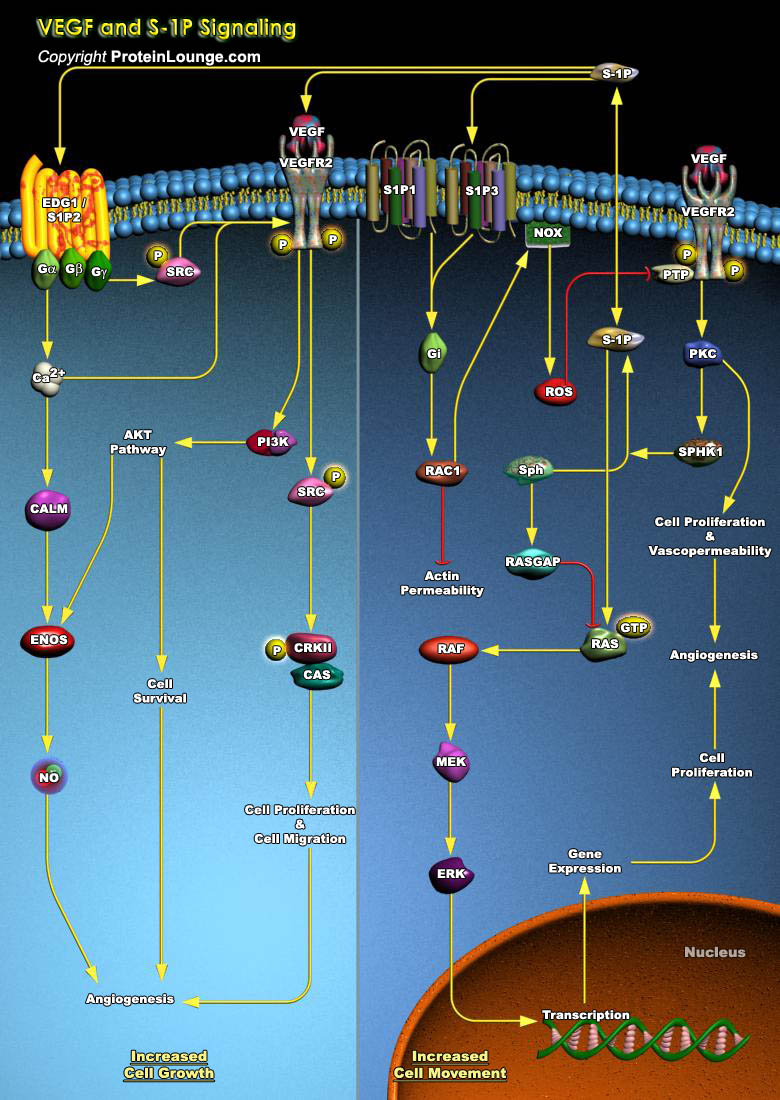
Sphingosine-1-phosphate (S1P) is a bioactive sphingomyelin derivative that is present in plasma and serum at high nanomolar concentrations. S1P acts via the specific cell surface G-protein-coupled receptors, S1P1-5. S1P1 and S1P2 were originally identified from vascular endothelial cells (ECs) and smooth muscle cells, respectively. S1P receptors modulate multiple intracellular pathways and thereby regulate central cellular processes, such as survival, proliferation and cytoskeletal organization. S1P, which directly acts on ECs, is involved in the regulation of angiogenesis and mural cell recruitment during development and in the adult. Vascular endothelial cell growth factors (VEGFs), on the othe hand, are recognized as the most crucial driver of vasculogenesis[..]
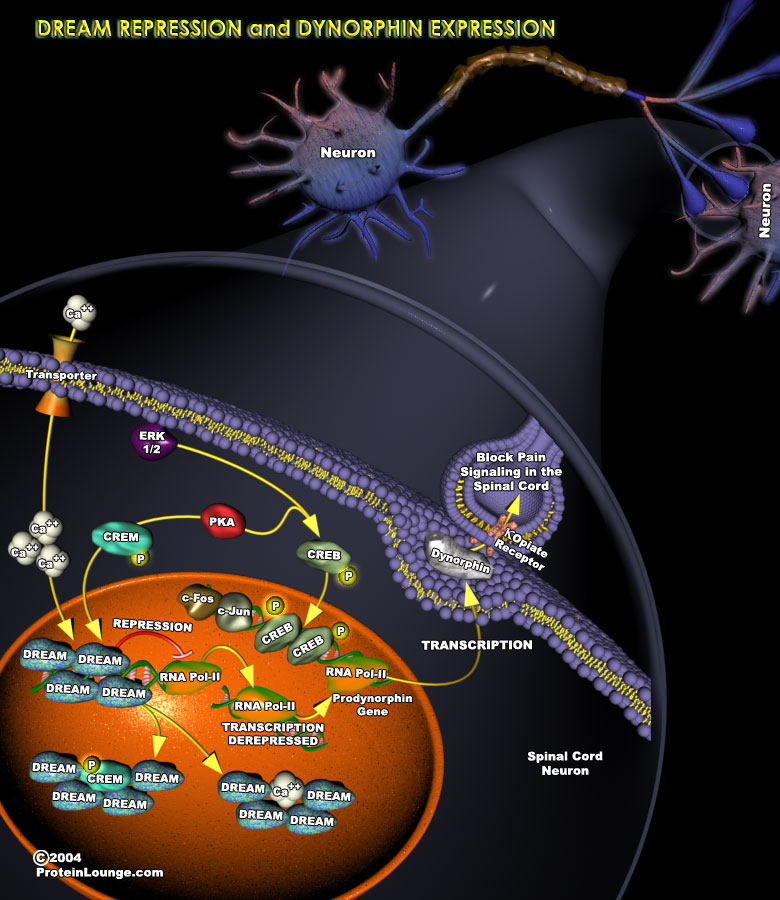
The experience of pain in response to noxious stimuli serves a crucial biological purpose: it alerts a living organism to environmental dangers, inducing behavioral responses that protect the organism from further damage. In contrast, chronic pain arising from disease states and/or pathological functioning of the nervous system offers no advantage and may be debilitating to those afflicted. Control and treatment of chronic pain remain major clinical challenges. The calcium-sensing protein DREAM (Downstream Regulatory Element Antagonistic Modulator) is a putative transcriptional repressor involved in modulating pain (Ref.1).DREAM is constitutively expressed in certain neurons and transcriptional activity of the repressor DREAM depends on its high affinity binding to a[..]
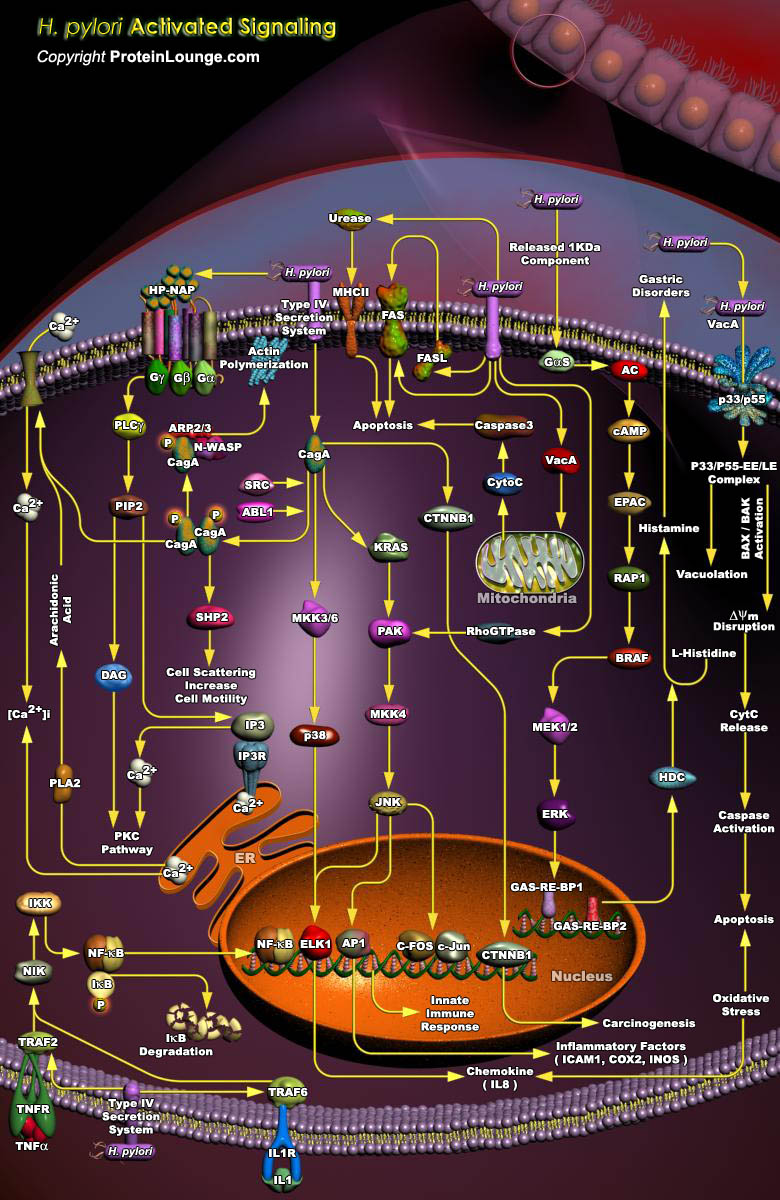
Helicobacter pylori is a gram negative bacterium that causes chronic inflammation in essentially all hosts, a process that increases the risk of developing peptic ulceration, distal gastric adenocarcinoma, and gastric mucosal lymphoproliferative disease. This bacterium also is the most common cause of ulcers worldwide. H. pylori infection is most likely acquired by ingesting contaminated food and water and through person to person contact. The infection is more common in crowded living conditions with poor sanitation. Infected individuals usually carry the infection indefinitely unless they are treated with medications to eradicate the bacterium. One out of every six patients with H. pylori infection develops ulcers of the duodenum or stomach. H. pylori are also[..]

